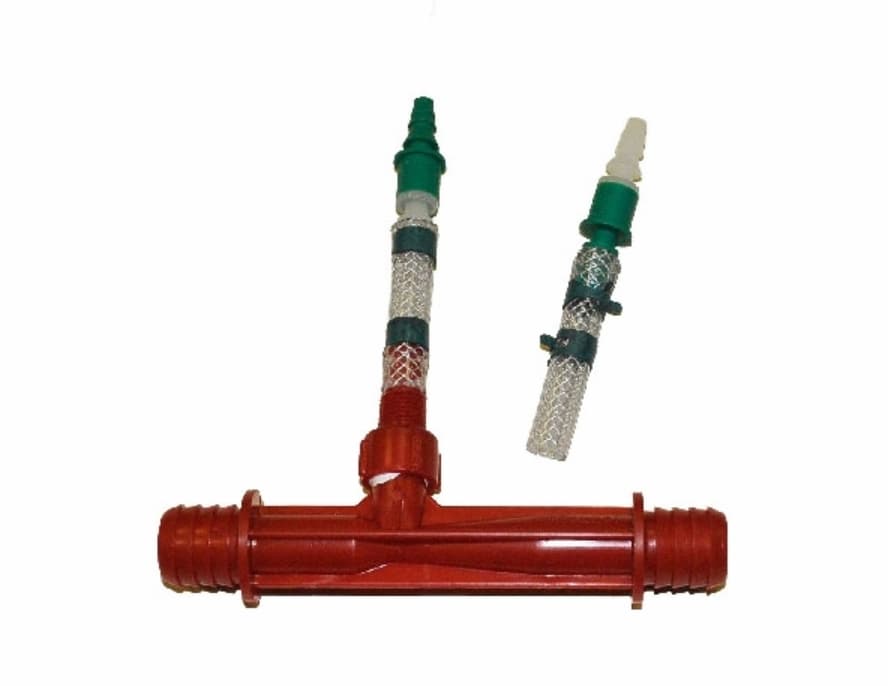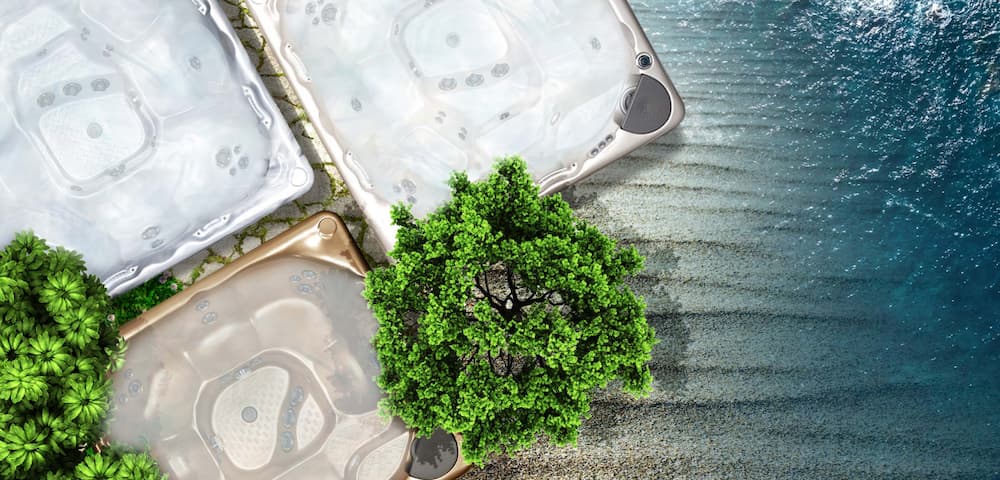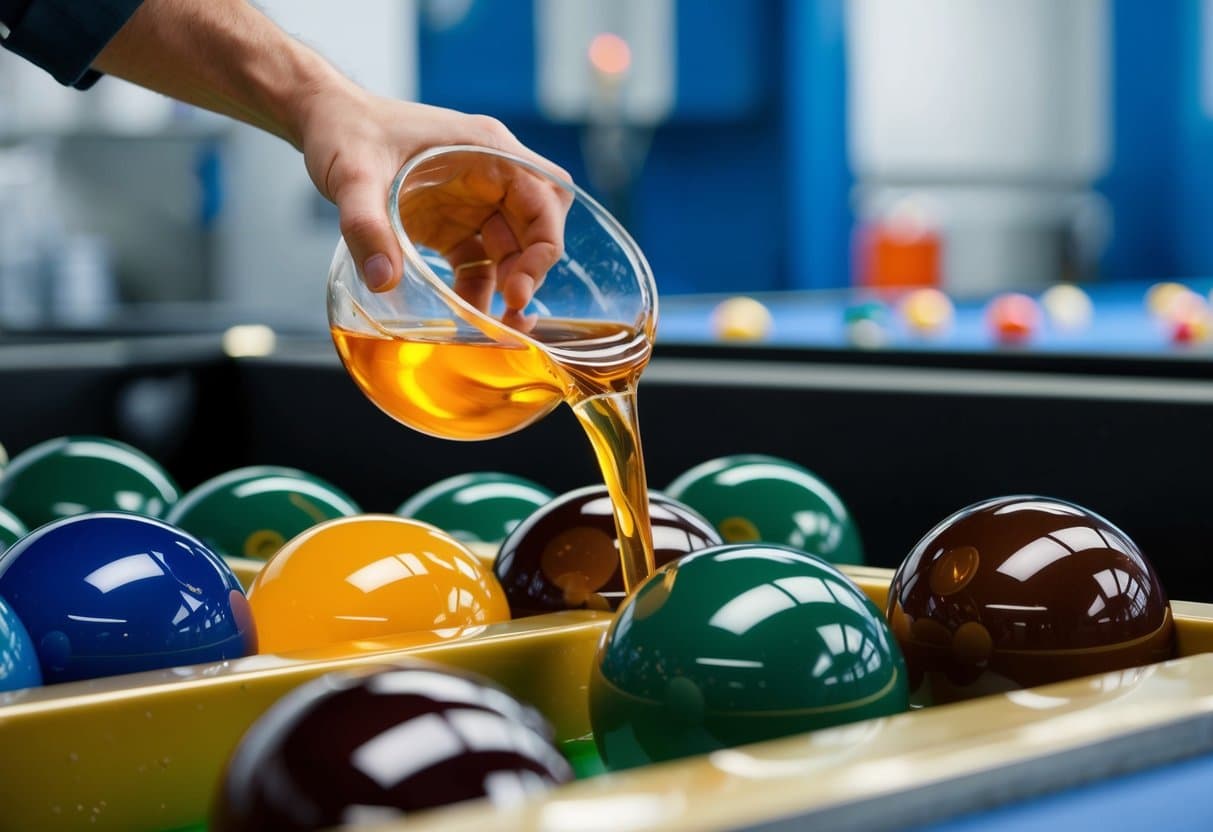Staying healthy is a priority for many people, and hot tubs can be great for that purpose. However, running a hot tub requires some upkeep, and if it’s not done correctly, the hot tub can become a breeding ground for harmful bacteria. Most users resort to using chemical sanitizers like bromine or chlorine, which some people find uncomfortable or even harmful to their health. Want a natural hot tub? Interested in operating a chemical free hot tub? It’s possible!
Your hot tub is supposed to be a place of relaxation and enjoyment, where you can let go of your worries and unwind. However, it’s hard to do that if you’re constantly worried about the presence of chemicals or germs lurking in the water. As much as we want to prioritize our well-being, we still want to make the most of our hot tub experience.
If you’re looking for a natural hot tub experience, there are several non-chemical alternatives available. These alternatives can notably decrease the quantity of chlorine or other chemicals required to maintain the hot tub’s cleanliness.
(See our selections for 2-8 person Beachcomber hot tubs.)
Hot Tub Sanitizer Alternatives
1. Ultraviolet System
UV systems are another effective method for dealing with hot tub contaminants. These systems employ high-intensity germicidal rays to eliminate bacteria, protozoa, and algae by modifying their DNA/RNA structures. Organic matter is inactivated upon exposure to this light, making it no longer able to reproduce and spread.
Although the UV system employs sophisticated technology involving ultraviolet radiation, it remains entirely safe for use within your hot tub. The UV system is installed within the piping of your filtration system and will instantly eradicate pathogens as water flows through it, thus providing an extra layer of cleanliness and safety to the hot tub experience.
UV systems fight off unpleasant odours and water discoloration. Installation is easy and the system is low-maintenance, requiring only an annual bulb replacement. However, they need to be used in conjunction with other sanitization methods to ensure maximum effectiveness.

2. Salt-based Sanitizers
While these systems are designed to replace traditional chlorine or bromine sanitation methods, salt-based systems are not technically non-chlorine hot tub systems. This is because electrolyzing the salt involved in this process generates chlorine. However, it is an improved form of chlorine as the salt concentration in the water is so low that its effects upon hot tub use are barely noticeable.
Salt-based systems are convenient to use as they don’t require users to manually add chlorine or bromine. The system creates the necessary amount of chlorine automatically, ensuring that the water remains clean and safe. Salt-based systems are easy to install, and the salt content in the water is typically low enough that it doesn’t pose any safety risk.

3. Ozonators
Ozone, a form of oxygen, is one of the most effective and environmentally friendly hot tub sanitizers available. Ozone is generated by an Ozonator, which uses electrical energy to create oxygen molecules and activate them with a third oxygen atom. The ozone produced by the Ozonator is then injected into your hot tub’s water, oxidizing organic contaminants and eliminating them.
This sanitization method is safe, fast-acting, and highly effective in killing bacteria and other organisms. Apart from its sanitizing properties, an Ozonator also provides your water with a soft, smooth, and silky feel. It has no odours or flavours and leaves no residue behind. As it is not a chemical, it won’t cause any skin irritation or bleaching of swimsuits.

4. Enzymes
Enzymes are proteins that act as catalysts, speeding up chemical reactions without being affected by them. They break down organic compounds like oils, sweat, and bacteria in the hot tub water into smaller particles. These are then removed by the filtration system, leaving your water clean and safe.
Enzymes are highly effective in preventing the build-up of oily residues and unpleasant scents, as well as preventing algae growth. Enzyme solutions are applied directly to the water and their effects can last up to four weeks.
Using enzyme treatments in your hot tub water treatment regimen doesn’t eradicate the necessity for sanitizers and shock treatments completely; however, it can significantly reduce the number of chemical agents required to maintain the water quality.
An enzyme-based hot tub water treatment solution is an environmentally-friendly option and can help to dissolve organic matter and contaminants in the water, reducing the strain on your traditional hot tub chemicals.
5. Mineral Sanitizers
Ionizers are a type of hot tub treatment that utilizes mineral electrodes to release copper and silver ions into the water. The ionizer generally functions by utilizing electrolysis to inject a low-voltage charge through a mineral electrode, which is installed in the hot tub’s return line.
When exposed to this electrical charge, the minerals release their ions into the water, thereby combating undesirable contaminants such as mould, algae, bacteria, and viruses. The silver ions help to fight bacteria, viruses and other microorganisms, while the copper ions act as a fungicide, inhibiting algae growth.
With a hot tub ionizer in place, you can significantly reduce your need for traditional chemical agents by 80% and still maintain a high degree of cleanliness in your hot tub water. This makes them ideal for environmentally conscious hot tub users who wish to enjoy a chemical-free, natural hot tub experience.
6. Non-chlorine shock
Non-chlorine shock treatments don’t function as sanitizers but rather as an oxidizer to break down contaminants and organic compounds in the water. They provide essential benefits, such as oxidizing water, eliminating impurities, and improving water clarity. Moreover, non-chlorine shock treatments help enhance the effectiveness of your traditional hot tub sanitizers. For instance, when applied alongside chlorine sanitizer, non-chlorine shock introduces ‘free chlorine’ in the water. Similarly, non-chlorine shock helps activate the bromine’s bactericidal properties. Here is a way you can shock your tub:
- First, aim to balance your pH levels to fall between 7.2 and 7.4 for optimal results.
- Open your cover to allow for proper ventilation and off-gassing of the shock.
- Turn on all of your jet’s air and set them too low.
- Add the amount of shock appropriate for your tub size.
- Let the water circulate for an hour.
- Turn on the air and let it circulate for an additional 20 minutes.
- After completing these steps, you should wake up to a crystal clear tub in the morning.
Tips To Reduce The Need for Chemical Treatment
Aside from the suggestions mentioned above, there are some additional ways you can reduce the need for chemical treatment in your hot tub. These are everyday habits that can greatly reduce the amount of debris and contaminants in your hot tub water. Many users don’t think of these tips, but they can make a huge difference:
1. Cover your tub when not in use.
A cover functions as a barrier that prevents debris, insects, and other particles from entering the tub and contaminating it. This simple step alone can reduce your need for chemical treatments significantly.
2. Rinse off before entering the hot tub.
If you or your guests enter the hot tub with dirt, oils, lotions, makeup, and other impurities on your skin, it will be transferred to the water, making it less clean and potentially harmful. You can ask everyone to shower before entering the tub or use a swimmer’s rinse bucket to quickly clean off. For those using hair products such as styling gels and hairspray, you can also provide swim caps to keep the products from entering the hot tub water.
3. Drain and refill your hot tub regularly.
Draining your spa every 3 to 4 months is a crucial part of maintaining your hot tub. This maintenance recommendation applies to chlorine-based hot tubs, while non-chlorinated ones should be drained more frequently, every 2 to 3 months. When you do this, make sure to clean the hot tub components and refill them with fresh, clean water. This will help keep your hot tub free from contaminants and make it easier to maintain.
4. Use a filter cartridge cleaner to remove bacteria and oils from the filter
Filter cartridges are responsible for removing debris, oils, and other contaminants from the water in your natural hot tub. To ensure that they remain effective, you should clean them with a filter cartridge cleaner once a week and replace them every year or twice a year depending on the size and usage of your hot tub.
5. Run the pump longer and more often.
Running the hot tub’s pump for an appropriate period is crucial in preventing stagnant water and breeding bacteria. It’s advisable to follow the manufacturer’s instructions or run it for a minimum of 8 hours every day. By maintaining proper water and sanitizer circulation, the volume of chemicals required to keep your hot tub water clean and healthy is greatly reduced.
6. Pre-treat the water before adding it to your hot tub.
Before adding any water to your hot tub, it’s important to pre-treat it. This ensures the water is free from microorganisms and chemical contaminants that could compromise its quality. Pre-treating the water involves using a chemical testing kit to check pH, total alkalinity and calcium hardness levels. If the results are not within the ideal range, appropriate treatments should be applied.
Final thoughts…
In reality, contaminated water in your hot tub can pose a more significant health risk than the chemicals typically used to sanitize it. Bacteria left to thrive in your hot tub can cause various diseases, ranging from skin conditions, and respiratory infections like pneumonia, and may even include sexually transmitted infections (STIs) in some cases. Keeping your hot tub clean, sanitized, and chemical free requires a bit of extra effort but is worth it for the health and safety of your family and friends. By following the tips listed above, you can reduce your need for chemical treatments and enjoy a natural hot tub that is healthy and safe to use.






